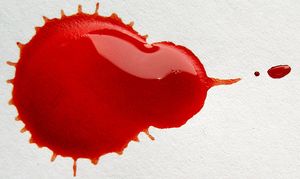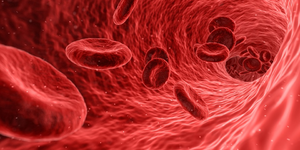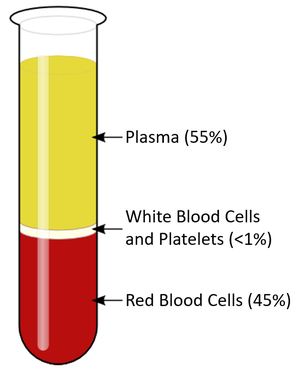Difference between revisions of "Blood"
(→Key Stage 4) |
|||
| Line 51: | Line 51: | ||
| style="height:20px; width:200px; text-align:center;" |A [[diagram]] showing the [[percentage]]s of the different parts that make up [[blood]]. | | style="height:20px; width:200px; text-align:center;" |A [[diagram]] showing the [[percentage]]s of the different parts that make up [[blood]]. | ||
|} | |} | ||
| + | |||
| + | ==Beyond the Curriculum== | ||
| + | {{#ev:youtube|https://www.youtube.com/watch?v=xfZhb6lmxjk}} | ||
Revision as of 16:44, 20 April 2019
Contents
Key Stage 1
Meaning
Blood is a red liquid found in some animals.
| A drop of blood. |
Key Stage 2
Meaning
Blood is a red liquid that carries oxygen and nutrients to every part of the body.
About Blood
- Blood is pumped around the body by the heart.
- Blood goes around the body in blood vessels.
- The blood is transported around the body to give every organ oxygen and nutrients.
- Blood can be bright red or dark red.
Key Stage 3
Meaning
Blood is a fluidic tissue found in blood vessels that carries oxygen, nutrients and waste products for transport around the body.
About Blood
| A picture showing red blood cells going through a blood vessel. |
Key Stage 4
Meaning
Blood is a fluidic tissue found in the Circulatory System that carries oxygen, nutrients, waste products and hormones for transport around the body.
About Blood
- Blood is a tissue made from red and white blood cells, platelets and a fluid called plasma.
- The different parts of blood can be separated by a centrifuge.
| A diagram showing the percentages of the different parts that make up blood. |


